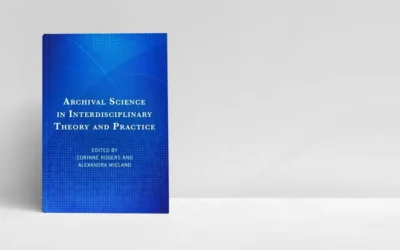Email Management and Archiving
Margot Note
Email remains the poster child for electronic records (mis)management, and with good reason. Many sources cite that 75% of all office work flows through email, and more recent figures put the figure at over 80%.
Why should archivists and records managers be concerned with email? There are several good reasons. The first is retrieval. A significant percentage of an organization’s unstructured records pass through email. It may not be a recordkeeping system, but it acts similarly to central files in the past. In addition, people keep emails in part for reference. Another reason, on the opposite side of the spectrum, is legal. Organizations are sensitive that email often contains “smoking guns” and wish to eliminate email quickly. A third reason is IT issues; email takes a large amount of work to manage the volume of emails during business. The last reason is the separation of wheat and chaff. In other words, a major problem with email is that while it contains much important material, much of it is duplicative and of limited, short-term value.
Organizations need to balance risk. Do they keep too much or keep too little? One approach for email retention is based on a couple of hypotheses. First, no solution will work if it asks employees to change how they work. Email management must be transparent to the user.
Most emails could be considered a record, but most do not merit long-term retention, even if their content is not duplicated elsewhere. Most are working files: useful to the employee to perform his or her duties but not of value to the organization itself or for the historical record.
Recent court cases and calls for government transparency have resulted in a gradual shift toward expecting emails to be kept. The community sees short-term retention (e.g., 60-90 days) as indicative that the organization has something to hide. This perception will continue to grow. Not that all emails need to be kept forever, but they need to be kept for a reasonable amount of time to allow for oversight.
Four Main Categories
Most email systems have four main categories of records. The first is the transmission of important final documents; however, they appear in other files somewhere. The second category is directions, instructions, and decisions. These directives may have long-term importance, such as hiring an employee, or short-term, such as granting paid time off. These decisions may or may not be documented in other files in other means. A third factor is discussion threads about any topic that may or may not lead to a decision. These may or may not be documented in other files. The final category is miscellaneous notifications and dissemination of information.
An email archiving application would be able to perform de-duplication of email messages, provide disposition functionality and search capability, and be able to tag some messages for special handling.
A Reasonable Solution
A solution for email archiving would be in three parts.
Designate individual employees as “stewards” for the records of various aspects of their work. They are not asked to manage their email but to manage the documentation of the business transactions for which they are stewards. If a person is a steward, that should be included in their performance plan, and their recordkeeping practices should be evaluated as part of their performance review.
Set clear standards on what needs to be kept as part of the files and provide guidance in gray areas, either when in doubt, keep it, or keep only what is necessary to document what happened (not why it happened). Note that the same guidance need not be given to the stewards of the records of all business processes. For example, purchasing may give one set of instructions and policy development of dispute resolution another. These standards are based on what employees want to maintain as the business process records.
If someone is not a steward, they can keep copies of their emails and other documents, but they are not required. If asked, they should be expected to locate relevant documentation, but they would be free to maintain it as they wish. This license to manage would be bounded in some way, either by the length of time (e.g., documents not opened in a number of months or years, get deleted) or by volume (e.g., one gig of storage to use wisely).
Technology can be applied, with retention focused on individuals and offices with especially important or sensitive work. It would also allow for de-duplication, saving storage costs. While email is poorly managed in most organizations, that does not prove that the basic transactions of the organization are not being managed as well. Give the records stewards the tools to do their job and hold them accountable. That is how records management started, and that is where it will be successful.
The solution is not foolproof, but it resolves some email archiving challenges. Some organizations will have more pressing business needs and set tighter restrictions. This approach is good enough for most organizations and can serve as a foundation for improvement.
Margot Note
Margot Note, archivist, consultant, and Lucidea Press author is a regular blogger, and popular webinar presenter for Lucidea, provider of ArchivEra, archival collections management software for today’s challenges and tomorrow’s opportunities. Read more of Margot’s posts here.
Never miss another post. Subscribe today!
Similar Posts
Ensuring Long-Term Access to Digital Archives
Long-term preservation is essential to ensure digital archives remain accessible and usable.
5 Best Practices for Personal Digital Archiving
Archivists have developed best practices for organizing and maintaining personal digital archives, safeguarding digital legacies for future generations.
Interview with the Editors: Wieland and Rogers on Interdisciplinary Archival Science
Alexandra Wieland and Corinne Rogers co-edited Archival Science in Interdisciplinary Theory and Practice. My interview with them is below.
The Importance of Personal Digital Archiving (Plus Steps to Get Started)
Archivists often help individuals manage and preserve digital files of personal significance.




Leave a Comment
Comments are reviewed and must adhere to our comments policy.
0 Comments